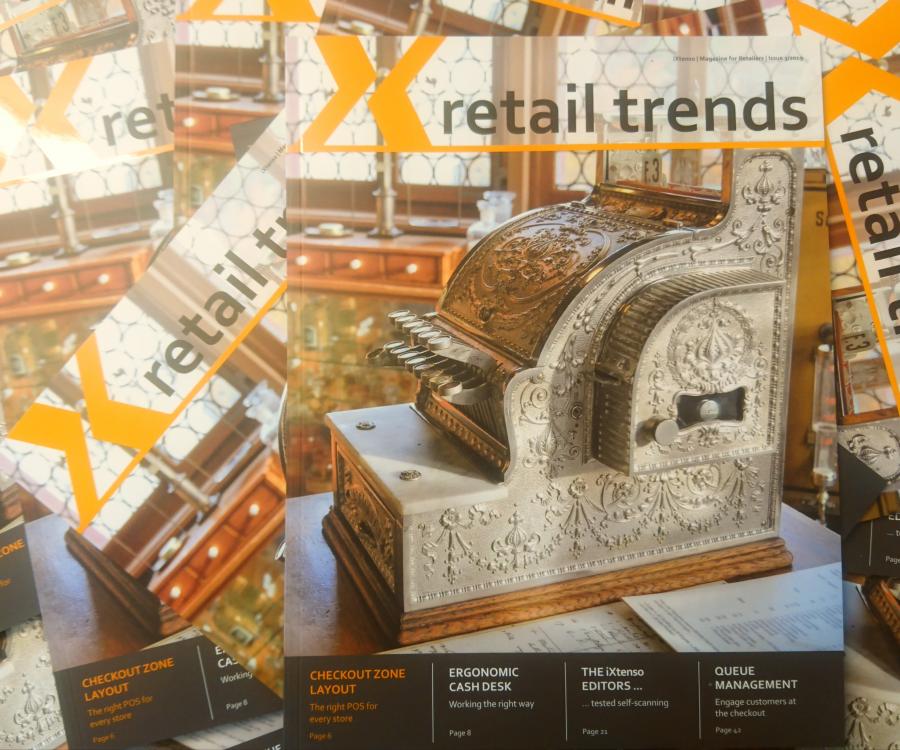
The number of products offered at supermarkets or discounters is enormous: consumers can find approximately 10,000 products in a supermarket and ca. 2,000 in discount stores (German Trade Association). Many are part of the same segment and compete with each other in a very limited area. This is why it is very important for manufacturers to stand out and design the customer’s contact with the brand (touchpoint) to promote sales. Consumers should help themselves at the advertising touchpoint and create sales.
”Touchpoints“– this term almost magically attracts advertisers and those in charge of marketing. But where do these ”touchpoints“ between consumers and the brand take place? We get in touch with brands anywhere and every day: we encounter them in the mass media, on the internet and at the point of sale (POS). Experiences we have with a drink or food for instance and then share with friends are also important touchpoints for companies. Technically, even being placed on hold on company hotlines help to shape a brand image. To create a positive image and increase sales figures, touchpoints have to be effectively managed.
The site of the (buying) decision: the point of sale
The point of sales is the so-called advertising touchpoint. Here it is all about selling products. For manufacturers, it is important to set themselves apart from numerous competitive products in direct competition. This commitment pays off. After all, while most shopping lists include products such as “milk” or “beer“, there usually are no concrete brand names behind it. Approximately 70 percent of consumers are said to not know which brand will end up in their shopping cart. This is the big chance for manufacturers to score with many ideas at the point of sale. ”Although it is possible to win over consumers who have purchased the same brand for years and who were born into a brand so to speak, this is a difficult thing to do,“ says Christian Machers, expert in point of sale marketing and Managing Director of the Gastro-Cool Company. ”This is why at the POS it is all about those consumers, who are not automatically associating a product with a certain brand. And it’s also about the numerous impulse purchases that are made at the supermarket.“
Directions to a brand
The old saying “you can’t see the forest for the trees” often applies to customers at the supermarket or at the discounter, who are searching for a product. When they look for beverages for instance, they quickly find the right department, but then the products are usually shelved in a row and in similar packaging. They differ in packaging design detail, but this differentiation only plays a secondary role when it comes to the sales promotion effect at the advertising touchpoint.
”This is why sales promotion measures are urgently required, so the consumer actually notices the products in the first place,“ explains Christian Machers. This can be done with special product placement for example, which makes the products stand out from the crowd. ”Displays or posters are also traditional measures at the point of sale, which visually advertise price promotions for instance,” says Machers.
Face-to-face contact with the product
Personal promotion is among the most effective marketing instruments at the POS. The difference compared to posters, special product placement or displays is the personal customer approach and an “experienced brand encounter“. When product demonstrations or sweepstakes are performed on-site for instance, the brand experience is intense, because the consumers are interactively experiencing the product.
Mag. Horst Untermoser, Managing Director at CPM Austria and a marketing specialist emphasizes:”The point is to offer the customer a highly emotional experience and speak to all of his/her senses.” It highly influences the buying decision, when all five senses are being addressed. Researchers at the University of Bochum, Germany, for instance reached the conclusion that a particularly strong stimulus is being triggered when several senses are being addressed at the same time. ”The customer’s attention in the brain increases tenfold by linking just two sensory channels. Aside from clearly increased sales, this also results in stronger memories and an increased brand loyalty,“ says Untermoser.
Advertising is accepted
The receptiveness of consumers for POS advertising tactics is large. This is one of the findings by the Advertising Touchpoint Study 2010. For this study, more than 7,000 online interviews in seven European countries were being conducted, where participants were interviewed about their perception and opinions about 33 different touchpoints in advertising. Next to intensity in advertising at shops/stores, which was perceived as high by 59 percent of Germans, only 17 percent of respondents perceive this intensity as intrusive. Respondents in Germany perceive advertising with product samples (14 percent) and advertising through recommendations outside the internet (15 percent) as even less objectionable.
”Marketing actions at the point of sale consequently have a better chance of being noticed and remembered without appearing particularly bothersome to consumers at the same time,“ explains Norbert Dube, Account Director Brand & Communication for TNS Infratest.
Keeping advertising promises at the touchpoint
The soft drink industry exhibits particular creativity when it comes to marketing at the point of sale and keeps giving proof of this. Among others, this is true for the sales promotion presentation of soda pops or energy drinks, which promises quick refreshment or instant energy boosts. By using individually branded fridges, the advertising promise is kept directly at the POS and promotes impulse purchases. A small investment with a big impact. ”Of course it is ideal for retailers to offer these products chilled, so that they can be immediately consumed after purchase,“ says Christian Machers. The promise of instant gratification increases the propensity to buy the product. ”We noticed that cooled drinks sell three times as much as non-cooled ones. When beverage companies then place refrigerators with their own logo at supermarkets or discounters, they command a continuous and attention-getting advertising display.“ This way the advertising touchpoint POS is being optimally used to boost sales. Brand recognition – strengthened by instant gratification – also increases.
The additional benefit
Sales promotion activities at the POS are efficient when manufacturers prepare them with the help of different touchpoints. This works great through ads in newspapers, on the radio or with TV spots. They don’t just advertise price promotions, but also time-limited sales campaigns such as free giveaways added to the product (on-packs and multi-pack promotions). This might be a glass or a cocktail shaker for beverages, which are included when you purchase a long drink. Ideally, the customer is prompted by the traditional promotion to purchase the item. Alternatively, he/she is prepared for the respective sales campaign during his/her regular shopping trip.
In a well-thought-out marketing concept in retail, posters or secondary displays for example serve as reminders of the sales campaign. This way, the free offer becomes a vehicle to promote sales. ”When choosing the added bonus, you need to make sure that the respective giveaway is consistent with the image and brand positioning. This way, it remains authentic. The quality of in-packs and multi-packs should be adapted to the brand image. There is no benefit in offering a premium liqueur and then adding a poorly made cocktail glass,“ Christian Machers explains.
Touchpoints are very fascinating for marketing experts and advertisers. If you sum up the touchpoints before, during and after a purchase, they significantly shape image. The ”touch point of sale“ with its high advertising intensity and customer acceptance is of utmost importance for sales success. It pays off to invest in efficient advertising tools in this case. It is important to pursue a stringent path in marketing, where all touchpoints are sensibly connected with each other. In doing so, you ensure that a brand is perceived as authentic and credible.
Text: Jürgen Nünning for iXtenso.com





